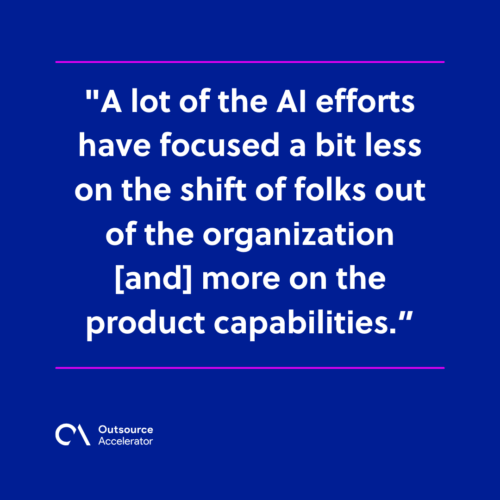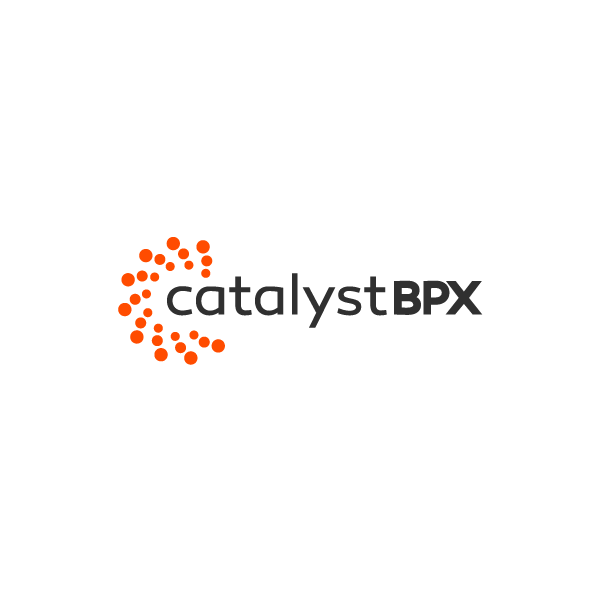The dynamics of offshore talent sourcing

Talent sourcing has become a critical component in the recruitment process. It’s no longer enough to place job ads online and hope for the best.
Instead, companies must adopt strategic and innovative approaches to identify and attract the best candidates.
Today’s job market is characterized by an abundance of talent, resulting in intensified competition for top workers. It’s essential to understand the dynamics of talent sourcing to remain relevant.
In the 480th episode of the Outsource Accelerator Podcast, Catalyst BPX co-founder Alex Small touches upon some aspects of talent sourcing that he’s observed during his tenure.
What is talent sourcing?
Talent sourcing is the process of finding, producing, and connecting with possible job candidates to fill particular roles inside a business. The aim is to find those with the requisite skills, experience, and qualifications to meet the company’s needs.
The broader goal of talent sourcing is to generate a steady flow of highly skilled applicants. The concept goes beyond traditional recruitment methods by proactively seeking out qualified individuals through various channels.
Talent sourcing is a crucial component of talent acquisition, laying the foundation for a successful recruitment process.
Offshore talent sourcing, in particular, has become more commonplace. This involves engaging with those in different geographical locations to tap into a global talent pool.
It commonly means outsourcing certain business functions to offshore locations where skilled labor may be more readily available or cost-effective.
Alex particularly highlights the strength of the Filipino workforce.
“I think now you can find exceptional talents. I have a lot of great folks on board at Catalyst, [and] they’re able to also attract senior directors and managers of that caliber in the Philippines and it’s built out teams that really operate.”
Strategies for effective talent sourcing
To conduct effective talent sourcing, organizations can implement a number of strategies:
Build a strong employer brand
Establishing a positive employer brand can help attract passive candidates and create a favorable impression of your company.
Highlight your company’s values, culture, and employee experiences through different channels like your website and social media.
For Alex, this means bringing in his Silicon Valley mentality.
“Better efficiency, better employee retention, better cultural experiences. A lot of things that tech companies have figured out [that] your average BPO just hasn’t really seen.”
Utilize multiple sourcing channels
Cast a wide net in your talent sourcing efforts by using a mix of channels.
Consider the following avenues:
- Job boards
- Social media platforms
- Industry-specific forums
- Recruiting agencies
- Professional networks
- Career fairs
Diversifying sourcing channels can help reach candidates with specialized skills or experiences.
Implement data-driven recruiting
Use data analytics and recruitment metrics in your talent sourcing.
This will allow you to:
- Identify the most effective sourcing channels
- Track candidate engagement
- Observe trends in the labor market
- Optimize the recruiting process
Data analysis can help refine your strategy and target the most promising talent pools.
Engage in talent pipelining
Rather than waiting for job openings to arise, you can proactively build relationships with potential clients.
By nurturing talent pipelines, organizations can maintain connections with top talent and reduce time-to-hire when positions become available.
Leverage technology
Utilize recruitment software, such as:
- Applicant tracking systems
- Candidate relationship management platforms
- Automation tools
These streamline the talent sourcing process and enhance efficiency.
Partner with universities and industry associations
Collaborate with universities and professional organizations to tap into emerging talent pools.
This partnership also creates opportunities for career fairs, internships, and interactions with student organizations to recruit promising graduates.
Offer employee referral programs
Encourage current employees to refer qualified candidates for open positions by providing incentives or rewards. Referrals frequently lead to the hiring of excellent candidates who mesh well with your company’s culture.
Benefits of offshore talent sourcing
Offshore talent sourcing offers several benefits for organizations, including:
Access to a global talent pool
Offshore talent sourcing grants access to skilled professionals who are not available locally. This increases the likelihood of finding candidates with specific skills and qualifications.
Cost-effectiveness
Offshore talent sourcing can often provide cost advantages, allowing businesses to hire talent at a lower cost. Outsourcing can be particularly beneficial for companies that operate in regions with high labor costs.
Alex acknowledges this but also notes it doesn’t compromise on efficiency.
“You can find good talents, and it’s more affordable, but [many] don’t realize that the ROI is much higher if you hire very well [and] build the right kind of systems around the talent that’s there.”

Scalability and flexibility
Outsourcing talent offers greater flexibility and scalability in adjusting a workforce to meet fluctuations or changing priorities. It frees you from the constraints of traditional hiring and long-term commitments.
Diversity and cultural perspectives
Offshore talent sourcing brings diversity to the organization, fostering a multicultural and inclusive work environment. Diverse perspectives can enhance creativity, innovation, and problem-solving within teams.
For Alex, this is also a more personal matter.
“I’ve always loved working with folks from other cultures and building relationships and bringing people together.
And so having this opportunity to build teams of people and bring people together around the world, and also have it be focused on quality, [is] personally very exciting.”
Extended operations
Working with talent across different time zones allows you to establish extended or round-the-clock operations. This ensures continuous productivity and faster turnaround times.
Focus on core competencies
Outsourcing non-core functions or tasks to offshore teams allows organizations to focus their internal resources and expertise on core business activities.
By delegating routine or specialized tasks to offshore partners, organizations can streamline operations, enhance productivity, and accelerate innovation.
Future trends of offshore talent sourcing
The future of offshore talent sourcing is shaped by evolving trends in technology, globalization, and workforce dynamics.
Here are some key future trends to watch out for:
Increased adoption of remote work
The rise of remote work and distributed teams is expected to continue shaping offshore talent sourcing. More companies will adopt remote work arrangements to hire talent from anywhere in the world.
Rise of gig economy platforms
The gig economy continues to expand with the growing number of platforms connecting companies with freelancers and independent contractors. Offshore talent sourcing can leverage these platforms to access highly skilled professionals on a project basis.
Alex recognizes the talent on these platforms but is also ready to offer an alternative via outsourcing partnerships.
“Let’s work together and build [a] unified team that integrates with your current team.”
Advancements in communication and collaboration tools
The development and adoption of advanced communication and collaboration tools will facilitate seamless collaboration between onshore and offshore teams.
We’ll see the development of more technologies, such as:
- Video conferencing
- Virtual collaboration platforms
- Shared document repositories
- Project management tools
Artificial intelligence and automation
Integrating AI and automation technology is expected to streamline offshore talent sourcing efforts. These tools can help screen more efficiently, predict future talent needs, and automate repetitive tasks.
Despite the fears of many that artificial intelligence will replace human workers on a wide scale, Alex sees differently.
“A lot of the AI efforts have focused a bit less on the shift of folks out of the organization [and] more on the product capabilities…

I do think [the workers] are just going to harness the value of AI to do their jobs better versus being replaced by it.”
Talent sourcing is subject to continuous evolution and may vary across industries and regions. Organizations must stay updated with market dynamics and emerging opportunities to leverage offshore talent effectively.
According to Alex, “If you’re looking for the top talent and you have access to the right networks [and the right hiring methods, you can bring on folks that are better than your average person.”







 Independent
Independent




